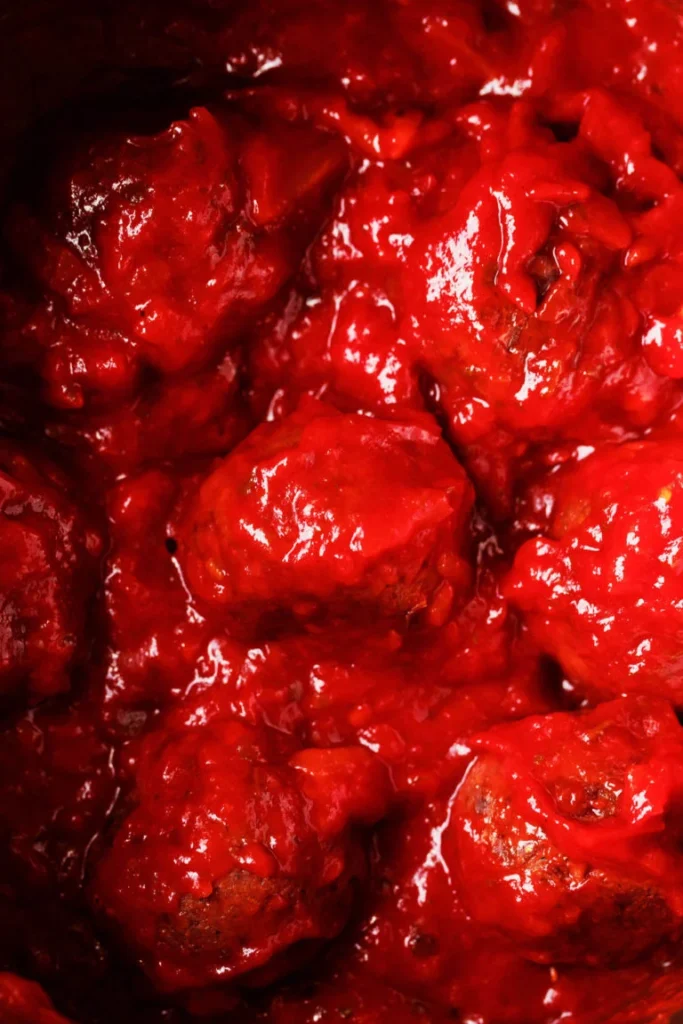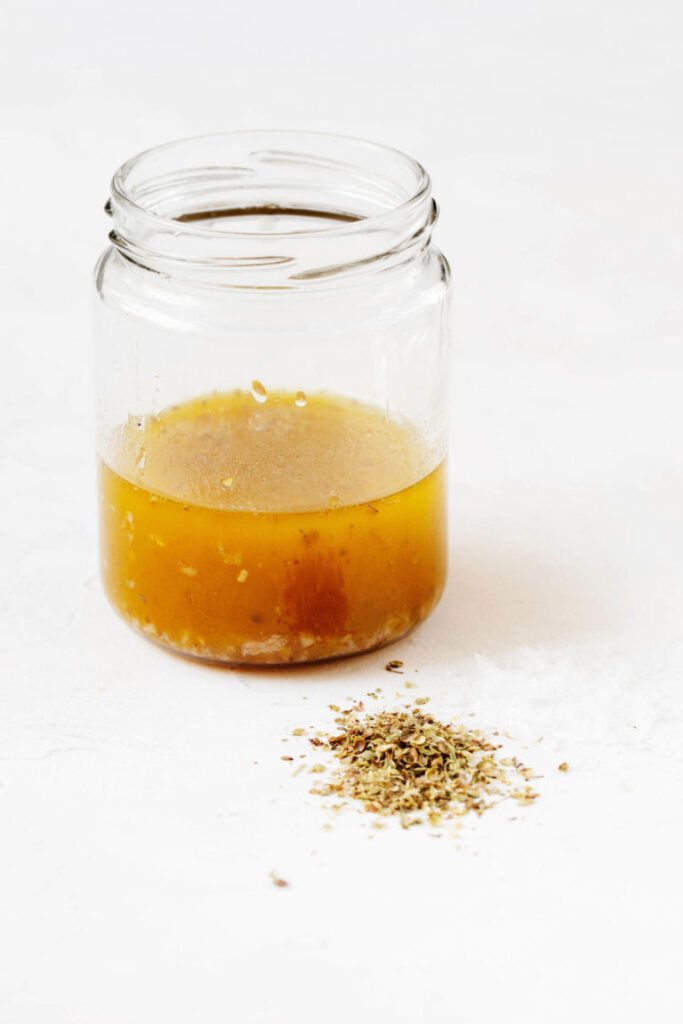This roasted vegetable pearl couscous salad is easy to make, versatile, and tastes great, whether hot or cold! Plump pearl couscous is the base, and tender roasted zucchini, tomatoes, peppers, carrots, and Onions give the salad color, flavor, and nutrition. This is a perfect dish to prepare for a relaxing lunch or as a side dish.

I love grain salad and pasta salad all year round. But I associate them with summer.
All summer, I like to boil a pot of grain or pasta on Sundays, add raw or cooked vegetables and a good dressing, and turn them into grain salads to prepare for vegetarian lunches.
This roasted vegetable and pearl couscous salad is my current favorite. I made it with a simple mixture before a recent trip.
While I love plain couscous, I’ve always had a soft spot for the rounder, fuller pearl.
This small-shaped pasta glows When mixed with fresh, colorful, sweet summer vegetables and topped with a delicious vinaigrette.
Let me tell you more about this simple dish that has so much mealtime variety!
What is pearl couscous?
When I say “standard couscous,” I mean Moroccan couscous. This is the most minor and most common type of couscous.
Moroccan couscous is more significant than semolina, a flour used to make semolina. But it’s better than bulgur wheat. Once cooked, it will become fluffy.
Moroccan couscous can be made into pilaf, used for something spicy (like my Moroccan-style butternut and chickpea stew), or used in grain salads.


I often use it to make carrot and chickpea couscous salads.
Pearl couscous, also known as Israeli couscous, is significant, round, and complete.
Pearl couscous, like all kinds of couscous, is a tiny pasta shape—something I always need to remind myself of because my brain often confuses it with grains!
However, it’s worth mentioning that if you like chewy grains, such as wheat, you’ll likely also like pearl couscous.
Cooking time for pearl couscous and Moroccan couscous
Making pearl couscous takes almost no effort, but it takes a little more time.
I love making pearl couscous as much as I love making other pasta. I bring a pot of salted water to a boil, add dry couscous, and make pasta to my liking.
This usually takes 8-10 minutes – it can be a little longer, depending on the brand of pearl couscous.
I would not say I like chewy grains or pasta, so I usually taste the couscous after 8 minutes to see if it’s ready and keep cooking if I want to cook it a little longer.
Ideally, cooked pearl couscous should be al dente but soft, not dense (undercooked) or mushy (overcooked).
It’s used to make pearl couscous.
Do you like pasta or pasta? For a simple side dish, delicious mushroom farro or dried lemon?
You can also use boiled pearl couscous to make soups or pickles.

I like to make a batch of vegan tempeh meatballs, coat them in a 20-minute tomato sauce, and drizzle them with pearl couscous. It’s an exciting change from the usual pasta.
Finally, pearl couscous is easy to make warm, room temperature, or cold pasta salads.
One of my favorite dishes to make with pearl couscous is a salad featuring roasted cauliflower, pistachios, and dates. This unique combination of flavors and textures is particularly delightful in the cooler months.

One of the most versatile and delightful dishes for warm weather is a pearl couscous salad, adorned with a vibrant array of roasted vegetables.
Is pearl semolina gluten-free?
Pearl couscous, like most pasta, is made with semolina, a type of wheat flour. Therefore, it is not gluten-free.
If you’re in need of gluten-free pearl semolina, rest assured that it’s readily available for purchase online.
Other options exist: cooked quinoa and millet would work well in place of this recipe. Both are naturally gluten-free.
Can I make a salad with regular semolina?
Yes, you can make a salad with regular semolina. Regular couscous is more delicate and fluffier, but it also works well in this recipe. The texture and flavor may be slightly different, but it’s a great alternative if you don’t have pearl couscous on hand.
How to make Roasted vegetable Pearl Couscous Salad
This recipe is wonderfully straightforward, with each step being a breeze to follow.
The process starts with oven-roasted vegetables.
Step 1: Roast the vegetables
In this recipe, the vegetables are baked at 400°F / 200°C. First, line a baking sheet with parchment paper or aluminum foil.
Pearl couscous salad needs:
- Pepper
- Red onion
- carrot
- zucchini
- Grape tomato
The first three vegetables—peppers, Onions, and carrots—require more cooking than tomatoes and zucchini, so you’ll bake them in stages.

The carrots, bell peppers, and red Onions in the pearl couscous salad must be roasted for 20 minutes.

Once the longer-cooking vegetables have got off to a good start, you can push them to the side of the baking sheet and add the remaining vegetables.
Put the peppers, Onions, and carrots in the oven 20 minutes ahead.
Once the vegetables are tender but not done, you push them to the side of the baking sheet. Add zucchini and tomatoes on the other side and add additional cooking oil.
Return the baking sheet to the oven and bake for another 15 minutes or until all the vegetables are tender and the tomatoes have burst.
Step 2: Boil the pearl semolina
While the vegetables are roasting, you’ll want to prepare the couscous for the pearl couscous salad.
To do this, bring a pot of salted water to a boil. Add the couscous and cook for 8-12 minutes or until tender but still al dente.
Drain the couscous through a fine mesh sieve, then transfer it to a mixing bowl.
Step 3: Stir the dressing
Once the couscous is cooked, stir the vinaigrette, season the salad, and bring it to life.

This salad dressing is the Greek vinaigrette of this blog. It’s tangy and garlicky, and, of course, it’s a great vegan Greek salad.
But I also like to put it on cereal or pasta salads, including pearl couscous salads.
If, for some reason, the taste of Greek vinaigrette doesn’t suit you, you can use the following vinaigrette instead:
- Red wine vinegar
- Simple champagne vinaigrette
- Orange miso vinaigrette
Step 4: Mix and season
Next, add the roasted vegetables to the pearl couscous in a mixing bowl. It should be a spacious mixing bowl to stir everything together quickly.
If you can, add some chopped fresh parsley.
The parsley is not essential, but it brings lightness, freshness, and extra flavor to the pearl couscous salad. Fresh oregano, basil, and chives are all excellent alternatives.

The Greek vinaigrette is tangy and studded with oregano, which helps spice up the pearl couscous salad.

Freshly chopped parsley adds a bright finish to this fresh summer pasta salad.
Pour the dressing over the ingredients and stir well. Taste the pearl couscous salad, then add salt, pepper, or vinegar as needed.
Step 5: Refrigerate or serve
If you serve the pearl couscous salad right away, it’s still hot.
There’s nothing wrong with that! This pearl couscous salad is versatile-it’s delicious hot, and the leftovers can be reheated. It’s a culinary adventure waiting to be explored.
However, it’s also a great cold dish. To do this, cover the mixing bowl and put the salad in the fridge for a few hours.
The flavors will blend, the couscous will cool, and you’ll have a delicious, iced dish to enjoy and share.
Meal preparation & storage
Speaking of refrigerating and eating, the roasted vegetable pearl couscous salad can be conveniently stored in an airtight container in the refrigerator for up to four days. This makes meal planning and preparation a breeze.
In case you’re wondering, this salad can be frozen for up to six weeks. So, go ahead and make a big batch, knowing that you can enjoy it later. Just remember to thaw it overnight before reheating or refrigerating.

Ingredients
4 teaspoons refined avocado oil, divided
3 medium carrots, peeled and sliced crosswise into 3/8-inch / 1cm thick pieces (about 1 cup / 120g)
1 large red onion, chopped roughly into 3/4-inch / 2cm pieces (about 1 1/2 cups / 180g)
1 large red bell pepper, trimmed, seeded, and cut into 3/4-inch / 2cm pieces (about 1 1/2 cups / 175g)
1 large or 2 small zucchini, trimmed, quartered lengthwise, and cut into 3/4-inch / 2cm pieces (about 2 cups / 225g)
1 cup whole grape or cherry tomatoes (160g)
1 cup pearl couscous (225g)
1/3 cup lightly packed, chopped parsley (15g)
4-6 tablespoons Greek vinaigrette (60-90ml)
Instructions
- Preheat the oven to 400°F / 200°C. Line a baking sheet with parchment paper or aluminum foil.
- Place the red onion, carrots, and bell peppers on a baking sheet. Drizzle two teaspoons of avocado oil over the vegetables and sprinkle with salt and pepper. Roast the vegetables for 20 minutes until tender but still need to be browned. Put the vegetables on one side of the baking dish and the zucchini and grape tomatoes on the other. Drizzle the remaining two teaspoons of avocado oil over the zucchini and tomatoes and sprinkle with salt and pepper. Use a spoon to mix the unroasted vegetables onto the baking sheet and return the sheet to the oven. Roast the vegetables for another 15 minutes, or until the Onions, carrots, and peppers are golden brown, the cherry tomatoes have cracked, and the zucchini is tender and starting to brown.
- Bring a large pot of salted water to a boil while you roast the vegetables. Add the couscous. Cook the couscous, as you would pasta, for 8-12 minutes or until the couscous is wholly tender but still al dente. Strain the couscous through a fine sieve.
- Add the couscous, roasted vegetables, and chopped parsley to a large bowl. Add the Greek vinaigrette and mix well. Taste the roasted vegetable couscous and adjust the salt and pepper as needed. If you need to add extra oil and vinegar, red wine vinegar, or olive oil, do so.
- Serve or store in an airtight container in the refrigerator for up to 4 days.


